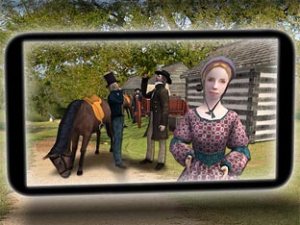The proliferation of new ways for people to connect on the Internet offers today’s online instructors a wide world of possibilities. As educators, we need to be mindful that not all technologies reach students with the same impact and learning experience. Moller (2008) divides the available tools into static, center, and dynamic, based on how learning is presented and processed. Static material offers the information to be learned, but requires no learner interaction. Static technologies include podcasts, web pages, and video webcasts. In a more central realm are the tools that require some interaction on the part of the student, such as wikis and blogs. Online discussion boards also fit into this category.
At the dynamic end of the spectrum is any technology that requires students to become part of the learning, such as virtual worlds, simulations, and instructional games. These tools involve the student by requiring thought, evaluation, comparison, and hands-on responses. Instead of passively watching an instructor lecture, the student not only can, but must be integral to the learning process.
As a student I have had the opportunity to immerse myself in a virtual organization, working to solve its problems and develop new business opportunities. In their MBA program, the University of Phoenix houses a number of virtual businesses, complete with emails from the CEO, financial documents, company histories, and problems to be solved going forward (Wasley, 2008). Student assignments may range from developing a new product to a supply-chain evaluation and re-vamping. The experiences gained from such simulations served to reinforce the text-based lessons and online collaboration efforts of student groups. An example of this virtual environment is the following, a web page from the fictitious Kudler Fine Foods (Apollo Group, Inc., 2013).

As an instructor I am always surprised by other educators who refuse to move into the more interactive experiences that technology has to offer. I am excited by the possibilities, and while podcasts and web pages offer the necessary information for learning, I greatly prefer demonstrations of how the lessons learned can be applied in the real world. As noted by Kumar Snehansu (2013), the question is not whether technologies should be used, but how can they be used most effectively for making people smarter (italics mine). Long-time advocate of online learning Badrul Khan stated in an interview,
When we talk about ‘high-quality deliverables,’ we do not mean static recorded video lectures by star professors from prestigious universities…in reality, learners need [an] interactive, facilitative, and supportive learning environment in which the facilitator’s presences – either synchronously or asynchronously – make the environment motivating, engaging, and dynamic (Taylor, 2014).

The concept map below illustrates the various technologies available in both static and dynamic ends of the continuum. Clearly there is a wide difference between reading a blog and contributing to an interactive web activity where ideas are tried, evaluated, and discussed, whether in real time or student-by-student through contributions in virtual classrooms. The more dynamic a technology, the greater the opportunity for learning that is applied to real-world experiences. This is the direction for us to take; if you are an educator and have not yet participated in these dynamic processes, the time is now, because our students are already there. (The full-page PDF can be seen by clicking on the “concept map” link at the beginning of this paragraph).
References
Apollo Group, Inc. (2013). Kudler Fine Foods. Retrieved from University of Phoenix: https://ecampus.phoenix.edu/secure/aapd/cist/vop/Business/Kudler2/intranet/index.asp
Moller, L. (2008). Static and dynamic technological tools . [Unpublished Paper].
Snehansu, K. (2013, June 28). Why teachers who use technology will replace teachers who don’t. Retrieved from EdTech Review: http://edtechreview.in/index.php/news/news/trends-insights/insights/401-teachers-who-use-technology-replacing-teachers-who-dont
Taylor, A. (2014, February). A look at Web-based Instruction today: An interview with Badrul Khan, Part 1. eLearn Magazine. Retrieved from http://elearnmag.acm.org/featured.cfm?aid=2590180
Wasley, P. (2008, August). University of Phoenix lets students find answers virtually. Chronicle of Higher Education, 54(48). Retrieved from http://chronicle.com.ezp.waldenulibrary.org/
Photo Credits
“Kudler Fine Foods” https://ecampus.phoenix.edu/secure/aapd/cist/vop/Business/Kudler2/intranet/index.asp
Texas Virtual History: http://txindependence.org/images/brazos_app.jpg
I have commented on my classmates’ blogs:
http://757edtech.wordpress.com/2014/11/08/am-i-static-or-dynamic-educ-8842-module-5/#comment-49

Very nice concept map. I too am boggled by educators who do not embrace technology and all it has to offer. I feel like we are setting bad examples for our students by not embracing new things and being willing to continue to learn.
LikeLike